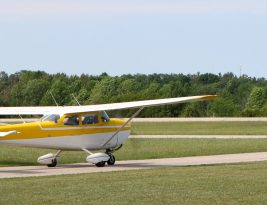Careful planning for a flight on instruments is important. Besides satisfying normal IFR requirements, an instrument pilot flying in clouds or at night must be conscious of high terrain or obstacles that cannot be seen, and ensure that a safe altitude above them is maintained. You must be aware of
…Category: IFR
View All CategoriesThis week we’re back with more on IFR. Go back and familiarize yourself with the basics we’ve introduced in earlier introductory posts from this year. Today, we’ll look at instrument scanning techniques. This post features text and images from The Pilot’s Manual Volume 3: Instrument Flying.
In instrument
…This week we’re back on the topic of IFR flight. If you’ve missed our previous posts touching on IFR, check out these posts:
- Regulations: “Minimum” IFR Training
- IFR: Flight at Mid-Level Altitudes
- CFI Brief: An Introduction to the Instrument Rating
- CFI Brief: IFR ATC Clearances
Federal Aviation Regulations Part 61 stipulates that no person may act as pilot-in-command (PIC) of a civil aircraft under IFR or in weather conditions less than the minimums prescribed for visual flight rules (VFR) unless the pilot holds an instrument rating. The rating must be for the category of aircraft
…Today we’re pleased to feature a guest post from CFI and DPE Jason Blair. He writes his own blog at JasonBlair.net
Learning to fly in IFR conditions requires a great deal of study and skill development. Flying blind isn’t easy! But general instrument flight training typically focuses on low
…Today’s post is short and sweet but a very important detail in your private pilot training nonetheless! 14 CFR 61.109 Aeronautical Experience lists the required minimum experience needed to apply for a private pilot certificate. §61.109(a)(3) states the required instrument flying time:
3 hours of flight training
…

